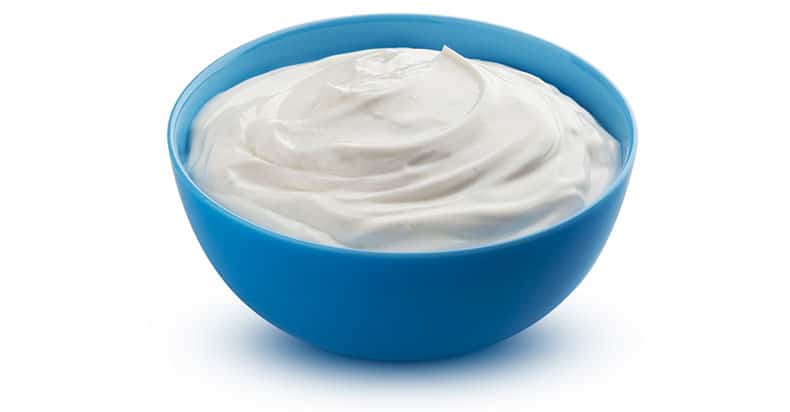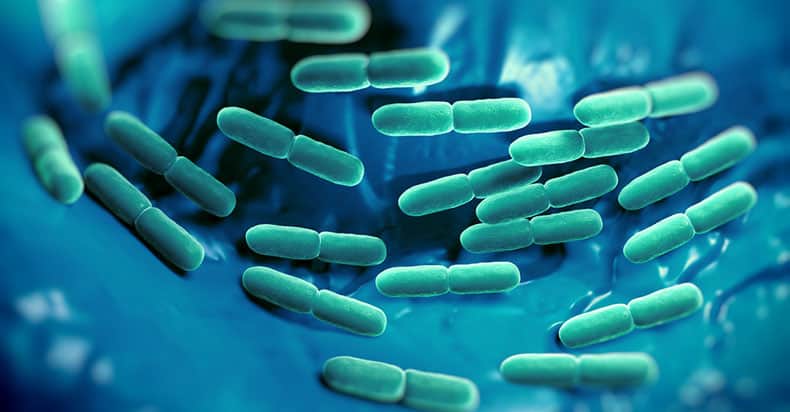Today we’re going to look at whether lactic acid and products containing LA are considered vegan-friendly. I’m sure by now that you’ve run across this additive on ingredient panels when scanning labels for animal-derived products. It sounds a lot like lactose, lactate, lactation and other dairy-sounding names, so it’s probably one of the most oft-inquired about ingredients.
Is it vegan? Lactic acid and lactate (the conjugate base of LA) are generally considered vegan. With few exceptions, lactic acid tends to be produced microbially or synthetically without animal-derived precursors. Sterol lactate, a less common form, is an exception due to the presence of stearic acid.
What we’ll do here is go over why LA is considered vegan, and then look at exceptions and any non-vegan applications of the molecule used in the food industry.
Why Lactic Acid Is Considered Vegan
Are Lactic Acid And Lactose The Same Thing?
Lactic acid and lactose aren’t same thing, don’t let the name fool you. While both lactose and lactic acid are found in milk and dairy product, industrially the two molecules are produced differently.
Lactose is manufactured using whey permeate (milk protein solids) while LA is produced via bacterial fermentation or chemical synthesis.
The confusion is understandable. The words share much of the same etymology, and lactate (another form of lactic acid) is also a verb—the present participle of the infinitive “to lactate”.
LA Bacteria Are Not Fed Lactose
In 2009, LA was produced predominantly, around 70–90%, by bacterial fermentation.1
Lactic acid is typically produced by fermenting LA-producing cultures using beet sugar, and cornstarch among other sources. This is the basis by which the Vegetarian Resource Group (VRG) considers LA to be vegan.2
In the food production industry, lactic acid fermentation is performed by LA-producing bacteria, a process that converts simple carbs like glucose, sucrose (glucose plus fructose), or galactose to lactic acid.
While it is true that galactose can be sourced from lactose (galactose plus glucose) the monosaccharide (a fancy term for sugar), it’s found abundantly in the plant kingdom in avocados, gums, mucilages, and sugar beets.3
It’s also a byproduct of certain processes used to produce ethanol via macroalgae.
These days, sugar beets and other plants tend to be used to source the galactose needed for LA fermentation—common non-beet sources include glucose from starch, pure sucrose, and raw sugar, all of which are vegan.4
Chemical LA Production Is Vegan-Friendly
In the same way, microbial production of LA doesn’t involve lactose, nor are animal-derived precursors needed to synthesize lactic acid chemically.
Industrially, LA is made primarily via the bacterial fermentation of carbohydrates, but chemical synthesis using acetaldehyde is also common.5
Precursors involved in the reaction include acetaldehyde, hydrogen cyanide, and lactonitrile. Other methods are common, depending on the country and region in which the chemical is synthesized.6,7
Non-Vegan Sources of Lactic Acid
Meat
In their comprehensive list of animal-derived and potentially animal-derived food ingredients, PETA lists lactic acid as being from both animal and plant sources. For this reason, they seemed to view the ingredient as being somewhat vegan, depending on the source.
However, their reasoning was a bit odd, or it seemed odd to me. For example, PETA mentioned how lactic acid is present in blood and muscle tissue.8
Most in the vegan community recognize animal muscle tissue to be non-vegan. At least, I hope so. So, it seems like the presence of LA in blood and meat would be hardly worth mentioning.
The main question should be whether or not the LA used in processed food products is ever sourced from animal tissue. And per the reasons mentioned above, that does not seem to be the case.
But, they are technically right, LA is found in animal tissue.
Most carbohydrates are found in plants (with the exception of milk), but meat does contain carbs in the form of glycogen, which is the animal equivalent to starch found in plants.
Glycogen, aka animal starch, is one of the only digestible forms of carbohydrate found in animal tissue.
The amount of glycogen and glucose present in muscle is small—i.e. not in amounts meaningful enough to be listed on food labels.
Anyway, this glycogen is converted to lactic acid during and after slaughter.9,10
Most glycogen is converted to LA by the time the meat reaches the table, and meat is considered poor-quality if all the glycogen undergoes conversion to LA prior to slaughter.
The phenomenon of “poor quality” meat is really indicative of the miserable life and unpleasant conditions animals endure in factory farms. The stress, fear, extreme temperatures, and starvation result in depletion of glycogen stores and higher levels of LA which lowers the pH of the tissue resulting in poor quality meat.11
Fermented Milk Products

If you’re interested in fermented milk products, make sure to check out the article on whether yogurt is vegan-friendly.
Above it was mentioned that LA is not equivalent to lactose. However, lactose can undergo conversion to LA, which is why dairy products—specifically fermented dairy products—contain lactic acid which results in a tangy flavor profile characteristic of yogurt and buttermilk.
Cultured milk products are produced industrially by fermenting milk or whey using Lactobacillus bacteria:
- Lactobacillus acidophilus
- Lactobacillus casei
- Lactobacillus bulgaricus
- Lactobacillus helveticus
- Lactococcus lactis
- Streptococcus thermophilus
So while LA is generally produced via bacteria fed on plant-based sugar sources, cultured milk products use the same bacteria which feed on the lactose in milk and whey protein to produce lactic acid.
So you know, lactose is the primary sugar found in milk, which is why it’s also referred to as milk sugar. It’s made up of a glucose molecule attached to a galactose.
When a bacterial culture is added to milk, it metabolizes lactose producing LA.
This is where cheese and other fermented milk products like sour cream and yogurt get their tangy flavor profile.12
While most know that milk contains lactose, fewer know that lactic acid is common in milk. This is probably because the presence of LA is usually only obvious when milk spoils—a process where bacteria converts the remaining lactose to LA.13
Sodium Stearoyl Lactylate
In the intro, it was mentioned that lactic acid can take a non-vegan form as sterol lactate, or SSL.
Sodium stearoyl lactylate, or stearoyl-2-lactylate, is an FDA approved food additive that’s highly versatile and thus used in a wide range of foods to improve the volume and mix tolerance of processed foods.
It’s GRAS, non-toxic, and biodegradable, so it’s a favorite for use in processed foods ranging from desserts to baked goods and even pet foods.14,15
SSL is considered non-vegan insofar as the stearic acid in the molecule is sourced from animals—stearic acid being a fatty acid found abundantly in animal fat.
The SSL form doesn’t really render lactate non-vegan because SSL is lactate attached to a non-vegan molecule. But, it’s still a form in which you’ll encounter lactate so I’m mentioning it here.
Keep in mind that stearic acid isn’t always non-vegan, but it tends to be. Fat sources that are considered rich in the fatty acid are found predominantly in animal adipose tissue (up to 30%) while vegetable sources only account for a small portion of stearic acid found in nature (less than 5%).16
Anyway, it’s just something to look out for. Thankfully, lactic acid itself is much more common on ingredient panels compared to SSL.
Is Lactic Acid Vegan? Conclusion
That should do it for now. Just know that while lactic acid and lactate sound very similar to lactose, they are considered vegan-friendly by most standards.
While it’s technically possible that the galactose involved in bacterial fermentation could be traced back to an animal source, most if not all LA produced these days is thought to be made via cultures fed a diet of vegan-friendly sugars.
SSL is probably non-vegan, but it’s a much less common ingredient compared to lactic acid on its own.
As always, thanks for reading.
References
- Endres H (2009). Technical Biopolymers. München: Hanser-Verlag. p. 103. ISBN: 978-3-446-41683-3.
- Questions About Food Ingredients. The Vegetarian Resource Group (VRG). https://www.vrg.org/nutshell/faqingredients.htm#lac
- Galactose, Wikipedia. https://en.wikipedia.org/wiki/Galactose
- Groot W, et al. (2010). “Chemistry and production of lactic acid, lactide and poly(lactic acid)”. In Auras R, et al (eds.). Poly(Lactic acid). Hoboken: Wiley. p. 3. ISBN: 978-0-470-29366-9.
- H. Benninga (1990): “A History of Lactic Acid Making: A Chapter in the History of Biotechnology”. Vol 11 of Chemists and Chemistry. Springer Netherlands, ISBN: 0792306252
- Westhoff, G; Starr, J N. (2012). “Lactic Acids”. Ullmann’s Encyclopedia of Industrial Chemistry. Weinheim: Wiley-VCH. https://onlinelibrary.wiley.com/doi/abs/10.1002/14356007.a15_097.pub3
- Shuklov IA, et al (2016). “Chemo-Catalyzed Pathways to Lactic Acid and Lactates”. Advanced Synthesis and Catalysis. 358 (24): 3910–3931. https://onlinelibrary.wiley.com/doi/abs/10.1002/adsc.201600768
- Animal-derived Ingredients Resource | Living https://www.peta.org/living/food/animal-ingredients-list/
- Understanding Food: Principles and Preparation (Page 39). Amy Brown – Wadsworth Cengage Learning – 2011. ISBN-10: 0-538-73498-1
- Understanding Food: Principles and Preparation (Page 42). Amy Brown – Wadsworth Cengage Learning – 2011. ISBN-10: 0-538-73498-1
- Understanding Food: Principles and Preparation (Page 150). Amy Brown – Wadsworth Cengage Learning – 2011. ISBN-10: 0-538-73498-1
- Understanding Food: Principles and Preparation (Page 211). Amy Brown – Wadsworth Cengage Learning – 2011. ISBN-10: 0-538-73498-1
- Understanding Food: Principles and Preparation (Page 215). Amy Brown – Wadsworth Cengage Learning – 2011. ISBN-10: 0-538-73498-1
- Ash, M.; Ash, I. (2004). Handbook of Green Chemicals (2 ed.). Endicott, NY: Synapse Information Resources. pp. 400, 654, 868, 875–876, 882.
- “Sodium stearoyl lactylate”, Title 21 Code of Federal Regulations, part 172, April 1 2019. https://www.accessdata.fda.gov/scripts/cdrh/cfdocs/cfcfr/CFRSearch.cfm?fr=172.846
- Stearic Acid, Wikipedia. https://en.wikipedia.org/wiki/Stearic_acid


